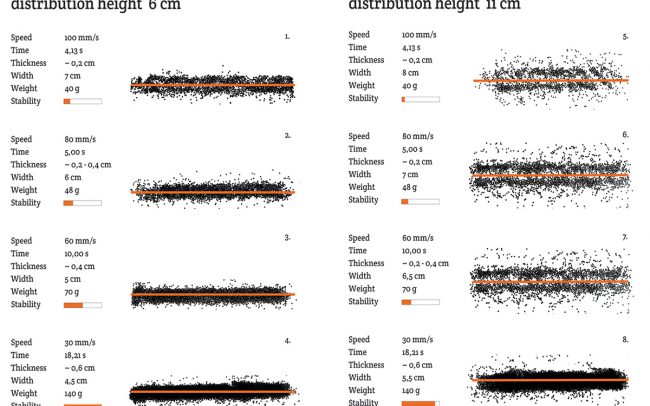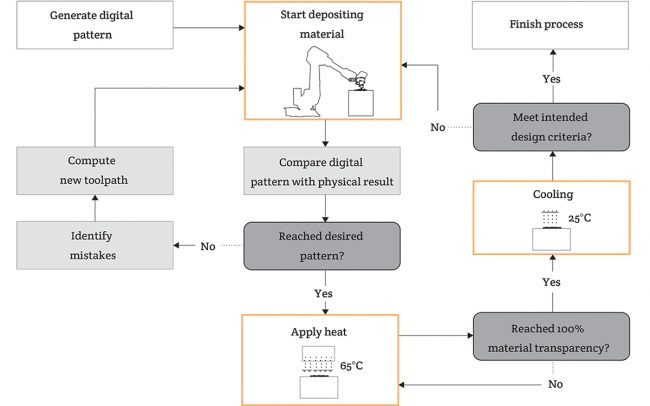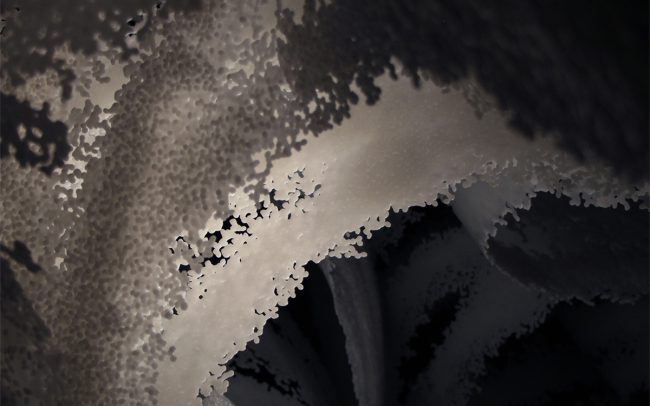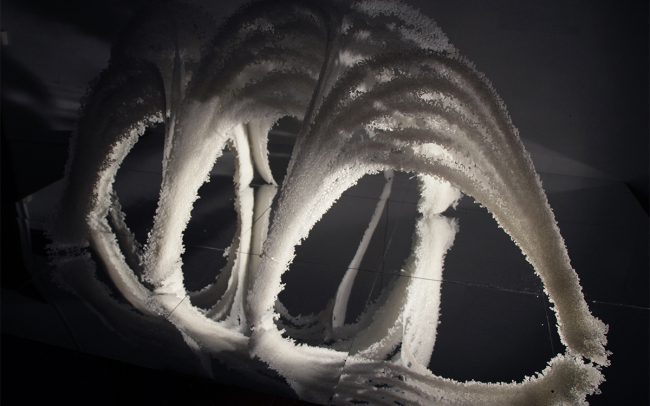looking for the synthesis of material aesthetic and perfomativity in combination with computational techniques and fabrication technologies
Aiming at overcoming perceived limitations in many industrial polymer-based manufacturing technologies (partly related to tooling costs relative to production volume), this project utilizes polymer forming as a low volume manufacturing scenario, where the material is automatically deposited and sintered to produce unique elements with very high degree of customization.
The material explored in this study is polycaprolactone (PCL) – a biodegradable thermoplastic from petrochemical origin, commonly prefabricated as granulate, with a melting around 65°C and solidifying at room temperature. As a thermoplastic material, PCL can be easily processed, reheated and reshaped. At room temperature of 25°C it has a compressive yield strength comparable to a vertical coring brick.
Considering the behavior of the thermoplastic granulate during deposition and phase-change, abstract digital geometry is precisely translated to the movements of industrial robots, but material behavior during deposition and melting enriches the digital precision and results artefacts of a onetime unique aesthetic appearance. In order to ensure these components still meet intended design criteria, real-time process feedback utilizes comparative vision sensing technology by evaluating the porosity, density and thickness of the components.
This formal system of porous structures, emerging from the custom workflow between the physical and the digital, offers enormous geometric potential to apply ornamentation to large surfaces, imagining a future where a new variety of formal performance is informed by material properties.










